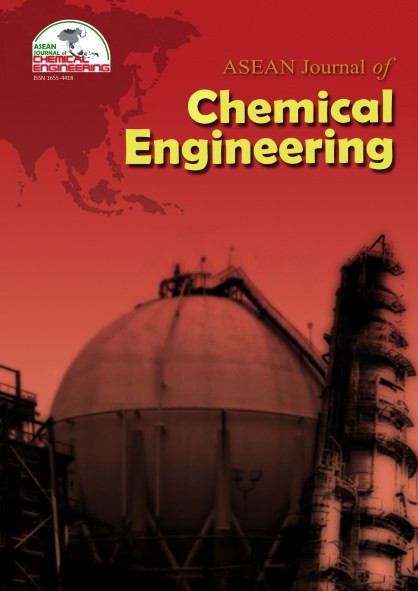Promoted Selective Non-Catalytic Reduction: Prospective Technology for Nitrogen Oxide Reduction
Abstract
Promoted selective non-catalytic reduction (SNCR) of nitric oxide (NOx) has been studied experimentally by injecting aqueous urea solution with and with;ut additive in a pilot-scale diesel-fired tunnel furnace at 3-4 % excess oxygen level and with low ppm of baseline NO-, ranging from 65 to 75 ppm within the investigated temperature range. The tests were carried out using commercial grade urea as NO- reducing agent and commercial grade sodium carbonate (Na2CO3) as additive. The f~rnace simulated the small-scale combustion systems where (a) operating temperatures are usually within 973-1,323 K and (b) NO-, emission level remains below 100 ppm. In the SNCR process with 5% urea solution, at normalized stoichiometric ratio (NSR) of 4, as much as 54% reduction was achieved at 1,128 K; while in the promoted SNCR process using Na2C03 additive, NO-, reduction improved to as much as 69% at 1,093 K In addition, the effective temperature window as well as peak temperature of NO-, reduction shifted towards lower temperatures in promoted SNCR These results were significant especially for the investigated level of baseline NO-. The ammonia slip measurements showed that in both cases the slip was below 16 ppm at an NSR of 4 and an optimum temperature of NO, reduction. The investigations demonstrated that urea-based promoted SNCR may be used for small-scale combustion applications and that commercial grade Na2C03 is a potential additive.References
Caton, J. A., Narney, J. K., Cariappa, H. C., and Laster, W. R. (1995). The Canadian J. Chem. Eng., 73, 345-50.
Diep, D. V., Linda, L. M., and Cheristiansen, P. B. (1996). U.S. Patent 5,536,482 Lyon, R. K., and Hardy., J. E. (1986). Ind. Eng. Chem. Fundam., 25, 19-24.
Radojevic, M. (1998). Environ. Pollution, 102, 685-89.
Rentz, O., Schleef, H. J., Dorn, R., Sasse, H., and Karl, U. (1996). Emission control at stationary sources in the Federal Republic of Germany, vol. 1: Sulfur oxide and nitrogen oxide emission control, French German Institute for Environmental Research, University of Karlsruhe, Karlsruhe.
Zamansky, V. M., Lissianski, V. V., Maly, P. M., Rusli, L., Ho, D., and Gardiner, W. C. (1999). Combust. Flame, 117, 821-31.
Copyright holder for articles is ASEAN Journal of Chemical Engineering. Articles published in ASEAN J. Chem. Eng. are distributed under a Creative Commons Attribution-NonCommercial 4.0 International (CC BY-NC 4.0) license.
Authors agree to transfer all copyright rights in and to the above work to the ASEAN Journal of Chemical Engineering Editorial Board so that the Editorial Board shall have the right to publish the work for non-profit use in any media or form. In return, authors retain: (1) all proprietary rights other than copyright; (2) re-use of all or part of the above paper in their other work; (3) right to reproduce or authorize others to reproduce the above paper for authors’ personal use or for company use if the source and the journal copyright notice is indicated, and if the reproduction is not made for the purpose of sale.



